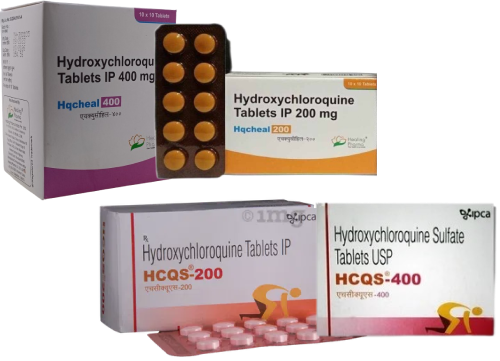The rising cost of healthcare continues to challenge millions of Americans, making affordability a key concern for both patients and policymakers. One of the most promising solutions is the growing adoption of generic medicine in USA, which is rapidly reshaping how people access treatment across the country.
What Is Generic Medicine and Why It Matters
Generic medicine in USA refers to non-branded drugs that are bioequivalent to their brand-name counterparts in dosage, strength, and effectiveness. These medications offer the same therapeutic benefits but at significantly lower costs, helping patients access essential treatments without financial strain.
Current State of Generic Medicine in USA
The current landscape of generic medicine in USA is robust, with over 90% of prescriptions filled using generics. According to the FDA, the use of generic medications saves the U.S. healthcare system nearly $300 billion annually, demonstrating their growing role in reducing national healthcare expenses.
Regulatory Framework and Quality Control
One reason for the success of generic medicine in USA is the strong regulatory oversight provided by the U.S. Food and Drug Administration (FDA). The agency ensures that all generic medications meet strict quality, safety, and efficacy standards before being approved for consumer use.
Economic Impact on Healthcare System
The economic benefits of generic medicine in USA extend beyond individual savings. Insurance providers, hospitals, and government health programs such as Medicare and Medicaid rely on generic drugs to keep overall healthcare costs manageable, freeing up resources for other services.
Trends Driving the Growth of Generics
Several key trends are accelerating the adoption of generic medicine in USA, including the expiration of brand-name drug patents, increasing pressure on pharmaceutical pricing, and rising consumer demand for affordable treatment options. These factors are creating a favorable environment for generic growth.
Biologics and the Rise of Biosimilars
While traditional generics dominate the market, the next frontier for generic medicine in USA involves biosimilars—generic versions of complex biologic drugs. As more biologic patents expire, biosimilars are expected to play a critical role in treating chronic illnesses like cancer and autoimmune diseases at reduced costs.
Technology’s Role in the Generic Medicine Revolution
Technology is significantly influencing the future of generic medicine in USA. Digital pharmacies, telehealth platforms, and AI-powered supply chains are making it easier for consumers to access and manage their medications, enhancing both efficiency and convenience.
Online Pharmacies and E-Commerce Integration
With the rise of e-commerce, generic medicine in USA is now more accessible than ever. Online pharmacies offer consumers the ability to compare prices, order prescriptions, and receive medications at home, reducing barriers to access and improving adherence rates.
Public Perception and Consumer Trust
Historically, some skepticism surrounded the quality of generics. However, growing awareness campaigns and FDA education efforts have improved public perception. Today, trust in generic medicine in USA is at an all-time high, with more patients confidently choosing generics over expensive brand-name drugs.
Government Policies Supporting Generics
The federal government plays a vital role in supporting generic medicine in USA through legislation and incentives. Policies such as the Hatch-Waxman Act and initiatives to reduce drug prices encourage competition, enabling more generics to enter the market.
Challenges Facing the Generic Medicine Market
Despite its growth, generic medicine in USA faces challenges such as supply chain disruptions, price-fixing lawsuits, and market consolidation. Smaller generic manufacturers struggle to compete, which can affect drug availability and pricing. Addressing these issues is crucial for the industry’s sustainability.
The Role of Pharmacy Benefit Managers (PBMs)
Pharmacy Benefit Managers (PBMs) have a significant influence on the distribution of generic medicine in USA. While they negotiate lower drug prices on behalf of insurers, there is ongoing debate about their role in pricing transparency and the actual cost savings passed on to patients.
Personalized Medicine and the Future of Generics
As healthcare shifts toward personalized treatment plans, generic medicine in USA must adapt. Innovations in pharmacogenomics may eventually lead to customized generic formulations, ensuring both affordability and precision in treatment.
Environmental Considerations in Generic Production
Sustainability is becoming a growing concern in the pharmaceutical industry. Manufacturers of generic medicine in USA are exploring eco-friendly production practices, reducing packaging waste, and improving energy efficiency in manufacturing to align with global environmental standards.
Expanding Access Through Global Trade
Although focused on the domestic market, the production and distribution of generic medicine in USA are influenced by international supply chains. Collaborations with global suppliers and manufacturers help ensure a steady flow of raw materials and finished products.
Opportunities for Local Manufacturing
To reduce dependency on international supply chains, there is a push to expand domestic manufacturing of generic medicine in USA. Government incentives and public-private partnerships aim to build resilient local production capabilities for critical medications.
Education and Awareness Campaigns
Increasing awareness about the benefits and safety of generic medicine in USA is key to boosting usage. Educational efforts by healthcare providers, non-profits, and government agencies help dispel myths and encourage consumers to make cost-effective healthcare choices.
Collaboration Between Stakeholders
The future success of generic medicine in USA depends on collaboration among stakeholders—government bodies, pharmaceutical companies, healthcare providers, and patients. A unified approach will strengthen supply chains, promote fair pricing, and improve health outcomes across the board.
Conclusion: The Road Ahead for Generic Medicine
The role of generic medicine in USA is more critical than ever in achieving a sustainable, affordable healthcare system. With favorable trends, supportive policies, and technological advancements, generics are poised to reshape the future of American healthcare. As awareness and accessibility grow, generic medicine will remain at the forefront of empowering patients and reducing healthcare costs nationwide.







